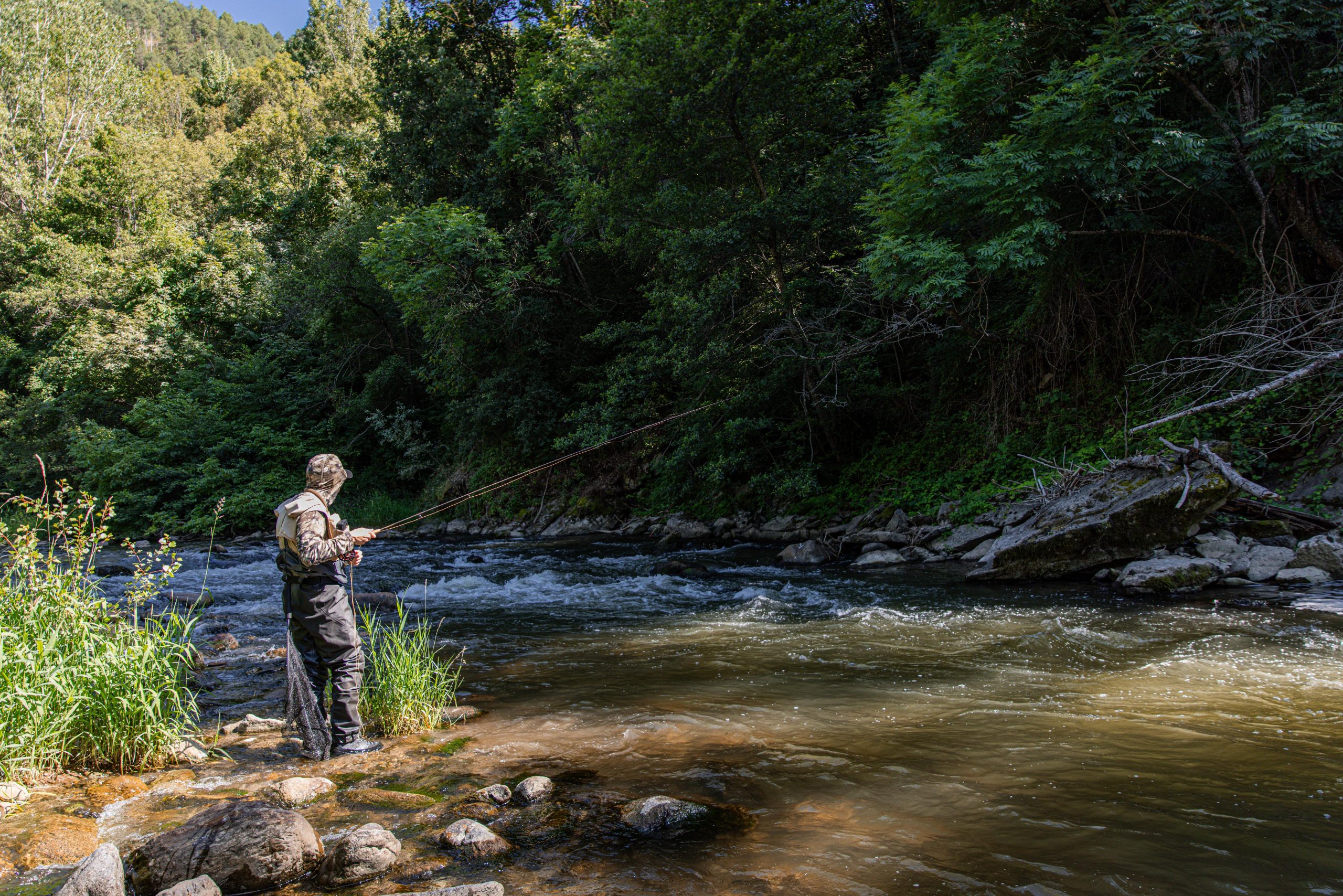Asturias condenses wild mountains, ocean air, and cold, clear rivers into a compact fly-fishing paradise. If you’re researching trout fishing spain, this is one region you can’t skip. Plan your trip with the specialists at Spain Trout Fishing for dialed logistics, permits, and daily water selection.
Below you’ll find the top Asturian rivers, seasonal patterns, hatch notes, and pro tactics drawn from years of guiding. Mix day sessions with village tapas and you’ll understand why many anglers return annually.
Trout Fishing Spain in Asturias: Why This Corner Works
Granite and limestone catchments feed freestone rivers with reliable summer springs and quick-clearing spates. Short drives connect valleys, so you can pivot rivers as flows and clarity change.
Brown trout dominate, with wild fish from pocket-water “hand” size to trophy class in larger pools. Sea-run fish appear in lower courses in season. Angling pressure spreads out thanks to abundant access and varied water types.
Quick Advantages
- Multiple basins within one hour, enabling weather/flow hedging.
- Freestone pocket water for dries and nymphs; smooth tailouts for technical sight fishing.
- Consistent caddis, mayfly, and terrestrial windows from May to October.
- Culture and cuisine minutes from the water for seamless travel days.
The Best Asturian Rivers for Fly Fishing
Below are flagship systems with character notes, suggested sectors, and practical tips. Always check local regulations, beats (cotos vs libres), and seasonal closures before fishing.
Sella
The Sella is Asturias’ most famous river, with clear cobble runs and broad pools. Upper and mid beats are classic dry-fly venues on stable flows.
Tactics: #14–18 CDC mayflies on overcast afternoons; soft-hackle motos for active water. A 9′ 4–5 wt excels.
When: May–June for mayflies and caddis; September terrestrials along pasture margins.
Piloña (Sella Tributary)
A more intimate dry-fly stream with mixed gradient. Ideal when the Sella runs busy or high.
Tactics: Euro-nymph in pocket water at first light; switch to #16 parachutes by late morning.
Pro move: After showers, target inside seams where color improves cover.
Cares
A dramatic limestone river with emerald glides and long, technical flats. Crystal visibility rewards stealth.
Tactics: 12–14′ leaders and micro-tippets for evening spinners; small olive emergers on sunny days.
Access note: Expect walking and careful wading—felt soles and a staff recommended.
Deva
Spring-influenced clarity and mixed gradient make the Deva a dependable Plan B.
Tactics: Early nymphing with slim pheasant tails; evening skittering caddis.
When: Late summer low water can fish superbly with 5X–6X and #18–20 dries.
Narcea (Nalón System)
Wider, brawnier water with defined lanes and deeper pools. Holds better-than-average trout and seasonal sea-runs.
Tactics: Indicator or tight-line nymphing with 2–3 mm tungsten heads in pushy currents.
Tip: Prospect shaded banks at midday; switch to streamers after a storm pulse.
Esva
A sleeper for anglers who like walking into solitude. Lush banks, pockety mid-reaches, and quick riffle-run sequences.
Tactics: Foam ants and beetles under willows; French-style nymphs in bouldery slots.
Gear: 9’6″ 3–4 wt for reach and drift control.
Trubia
Cold tributaries and mixed substrate create varied beats from riffles to silted edges. Good teaching river.
Tactics: #14 elk-hair caddis over riffle heads; small jig nymphs through choppy slots.
Family-friendly: Several accessible pull-outs make logistics easy.
Ibias & High Western Catchments
Remote feel and lightly trodden banks reward patient walkers.
Tactics: Prospect with #12–14 attractor dries; switch to small perdigons for drop-offs.
Note: Bring a map and respect private tracks; cell coverage can be patchy.
For multi-region ideas that pair Asturias with neighboring basins, see Fly Fishing Northern Spain and broader options on Fly Fishing in Spain.
Seasons, Water, and Hatches in Asturias
Spring (April–June)
Snowmelt and rain pulses keep levels lively; clarity returns quickly after spates.
- Hatches: Baetis, medium olives, March Brown types, early caddis.
- Program: Nymph mornings, dry midday, spinner fall evenings.
Summer (July–August)
Stable low flows, warm afternoons, and strong evening activity.
- Hatches: Caddis waves, pale evening duns, yellow sally stones; peak terrestrials.
- Program: Dawn and last-light dry-fly, pocket-water nymphing midday, beetles near pastures.
Early Autumn (September–mid-October)
Cooler nights and renewed activity through the day.
- Hatches: Olives, late caddis, flying ants on weather shifts.
- Program: Light nymphs on seams; dry-dropper across broken water; stealth on flats.
Tactics, Gear, and Rivercraft
Rods, Lines, Leaders
- Rods: 9’–9’6″ #3–5 for dries and nymphs; a 10′ #3 for Euro-nymphing.
- Lines: True-to-weight floating lines with long front tapers for presentation.
- Leaders: 12–14′ to 5X–6X for technical water; 9–10′ to 4X for boulder runs.
Flies That Matter
- CDC olives #16–20, parachute adams #14–18, elk-hair caddis #14–16, foam ants/beetles #12–16.
- Nymphs: PT/olive slim jigs 2–3 mm, perdigons in tan/olive/black, soft hackles #14–16.
- Streamers: Sparse sculpins/buggers #8–10 for pushy post-spate currents.
Reading Asturian Water
- Seek oxygen: riffle heads and chop when temps climb.
- Shade is structure: undercut banks and tree lines protect bigger fish.
- Pace the day: snack mid-afternoon and stage for 18:30–dark surface windows in summer.
For deeper Pyrenees tactics that pair well with an Asturias circuit, browse Fly Fishing Pyrenees Spain.
Sample Itineraries and Practical Examples
Three-Day “Valleys & Limestone” Sampler
- Day 1 – Sella/Piloña: Dry-dropper prospecting; evening spinners on flats.
- Day 2 – Cares: Long leaders, micro-olives, stealth wading.
- Day 3 – Deva/Narcea: Morning nymphing; caddis skates at dusk.
Actionable example: After a night shower, start on a tributary that clears first (e.g., Piloña headwaters). Fish a #16 parachute in sunlit glides, then jump to the Sella for evening CDC spinners.
Six-Day “Freestone Grand Tour”
- Days 1–2 – Sella Basin: Alternate Sella and Piloña based on traffic/flows.
- Days 3–4 – Cares/Deva: Technical flats and pocket-water nymphing.
- Days 5–6 – Narcea/Esva: Heavier water, indicator or tight-line, streamer windows post-spate.
Actionable example: On bright, still afternoons, rig a 14′ leader to 6X and stalk bank-side sippers with #18–20 CDC emergers. If rises shut down, clip on a 2 mm pheasant tail under a #16 caddis.
Regulations, Access, and Conservation
Asturias manages a mix of cotos (regulated beats, often by reservation) and libres (open access) with seasonal rules. A regional license is mandatory; some beats require daily permits.
Practice careful wading to protect redds, pinch barbs where required, and use soft-mesh nets with quick in-water releases. Pack out all tippet and respect farm tracks and gates.
When is peak season in Asturias?
May–June and September offer the best balance of flows, temps, and hatch variety.
Do I need a guide for Asturias?
Not mandatory, but guides optimize water choice, permits, and presentation for local fish behavior.
What rod should I bring?
A 9′ #4–5 for dries and a 10′ #3 for Euro-nymphing cover most scenarios.
Can I rely on dry-fly fishing?
Often, yes—especially evenings. Always carry slim nymphs for midday or high sun.
Are permits complicated?
There’s a license plus beat rules. We arrange both when guiding to keep days simple.
How do I book a trip?
Reach out with dates and goals; Spain Trout Fishing builds a custom plan with rivers, lodging, and logistics.
Asturias delivers the essence of trout fishing spain—wild browns in varied freestone water, short drives between valleys, and evenings in villages that still feel authentic. With the right seasonal timing, stealthy presentations, and flexible routing, you can hunt selective surface feeders one hour and pocket-water rockets the next.
For tailored dates, permits, and day-by-day river selection, contact Spain Trout Fishing. If you’re comparing regions or budgeting, browse program options on Fly Fishing in Spain and current fly-fishing prices in Spain.

